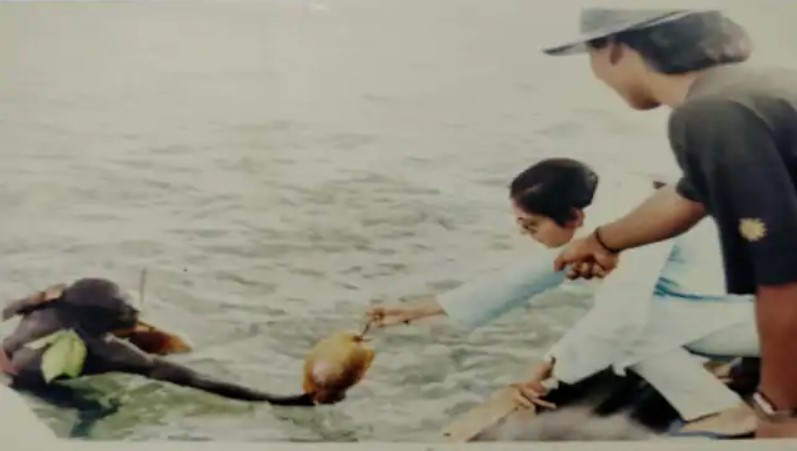
Vishvajit Pandya in his book, ‘In the Forest: Visual and Material Worlds of Andamanese History,’ talks about the exploitative need of the non-tribal populations to use the indigenous in constructing a sense of self. He says the same is the reason behind the usage of labels such as ‘hostile’ and ‘violent’ for the Jarawa Community of the Andaman Islands. A deeper investigation, however, makes one understand that over the years, the vivid complexity of their world has been ignored. Like many other indigenous communities, they have faced threats that are not only harmful to the vast knowledge they have about flora and fauna of the Andaman islands, but also to their culture, livelihood, and population.
The Jarawas have lived on the Andaman Islands for over fifty thousand years (their ancestors are supposed to be one of the first migrants from Africa). Over time, modern settlers increasingly encroached upon their space. During the British colonial period, they were both persecuted and used for aid in hunting activities. In more recent times, attempts were made by governments to introduce them to urban societies. Though such attempts at faulty assimilation did not come to pass, they posed a significant threat to their lifestyle which could have resulted in the death of a whole system of knowledge, mode of communication, culture and survival. Further, the story of their exploitation does not stop here. Tourists from all over the world who have flocked to the islands of Andaman have done more damage to the Jarawas than the benefits they have given to the Travel Industry there. The traveller’s curiosity has led to the use of the Andaman Trunk Road as a means of unethically ‘publicising’ the Jarawas as mere objects. The road passes through the territory which they have taken care of as their motherland over thousands of years. It has given avenues to poachers allowing them to harm more than just the fauna there. Poachers have sexually exploited, raped, and threatened the females of the Jarawa tribe along with introducing the members of the community to addictive substances like alcohol and tobacco. Moreover, forcing one’s way into the lands and lives of isolated communities also puts their population at risk as they might not be immune to diseases like the mainstream populations. Though there are more than four hundred Jarawas on the island, they are one tragedy (like Coronavirus that spreads through contact) away from a traumatic demise. In the past, measles has caused irreversible damage to the community.
When an individual talks about building a peaceful contact with one of the original inhabitants of the Andaman Islands, a lot of aspects need to be accounted for. In his book, Vishvajit Pandya says that the Jarawas’ ‘extreme’ behaviour can be understood as a result of their perception of the outsider that is moving into their territory. People often ignore the lack of verbal communication between mainstream and indigenous populations of the Andamanese Islands. The ‘contact sessions’ have largely included the exchange of gifts and food but not a peaceful exchange of messages about the mainstream concepts of boundaries which the latter is constantly redefining and the former is still coming to terms with. Despite the presence of these misleading labels (hostile, violent, etc.) anthropologists like Dr Madhumala Chattopadhyay, who initiated a friendly contact with the Jarawas for the very first time in history (as reported by The Print) has said that even though the tribe is technologically behind, it is far more socially advanced than the mainstream populations.
The community also carries linguistically and aesthetically unique features that distinguish them from the whole Southeast Asian trends. They are also said to have evolutionary significance. Jarawa art is characterised by a lack of figurative representation which makes the anthropologists curious as to whether this signifies a stage of cognition that led humans to favour geometric shapes worldwide (Sreenathan, M., Rao, V., & Bednarik, R. (2008).). Linguistically, their language is a key to fathom the Pleistocene era in the Indian subcontinent. Their ancient and valuable knowledge of the wind and animal movements has helped them prevent any damage to their lives during the Sumatra-Andaman earthquake in 2004.
The realisation that photos of the private and sacred lives of their community are so easily available on Google leads one to question our ability to respect the verbally unuttered yet much-needed privacy the Jarawas need. The Jarawas form a crucial part of our intellectual and cultural heritage, and therefore, they should be protected from being subjected to the forces of figurative and literal museumization. Curiosity should know its limits because the example of the Jarawas has taught us that somewhere down the line, ‘interest ‘loses its innocent character and turns into encroachment – both physical and intellectual.


Everything is very open with a very clear explanation of the challenges.
It was definitely informative. Your website is extremely helpful.
Thank you for sharing!